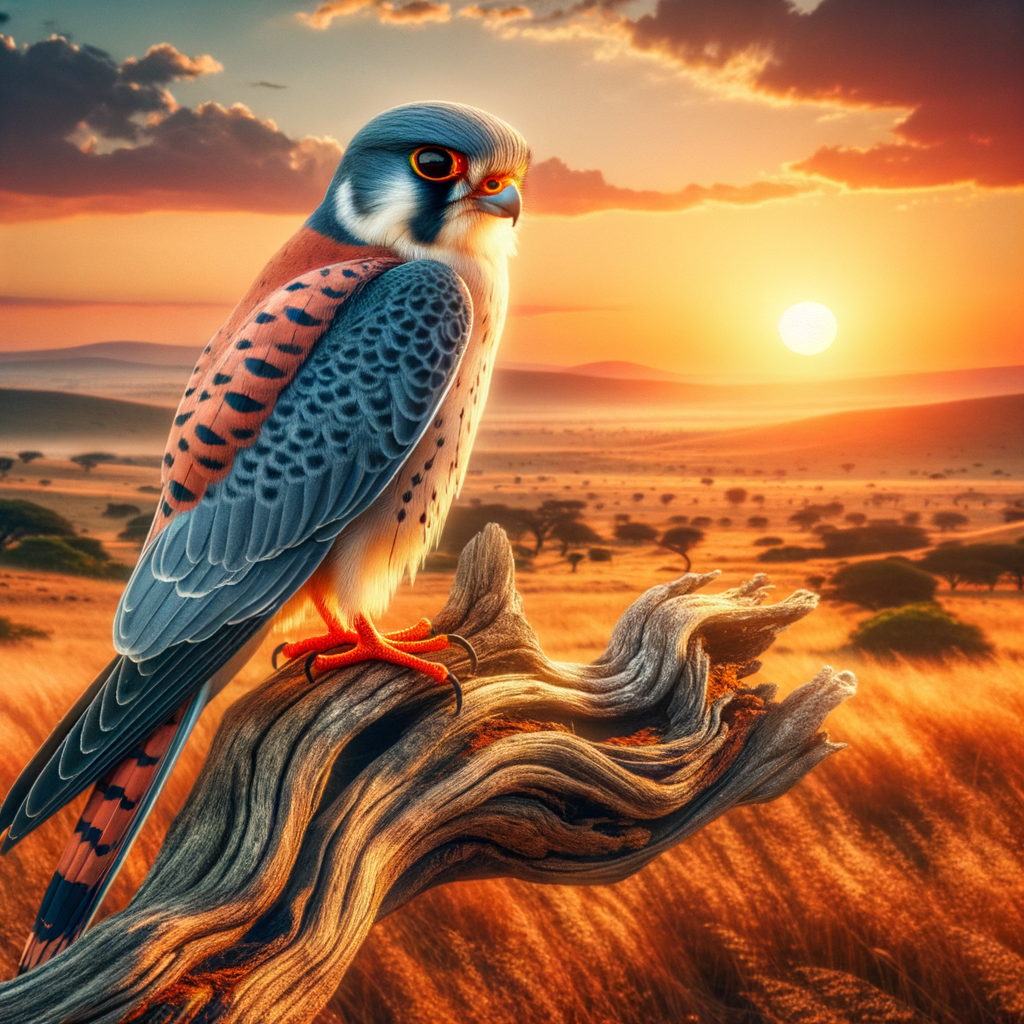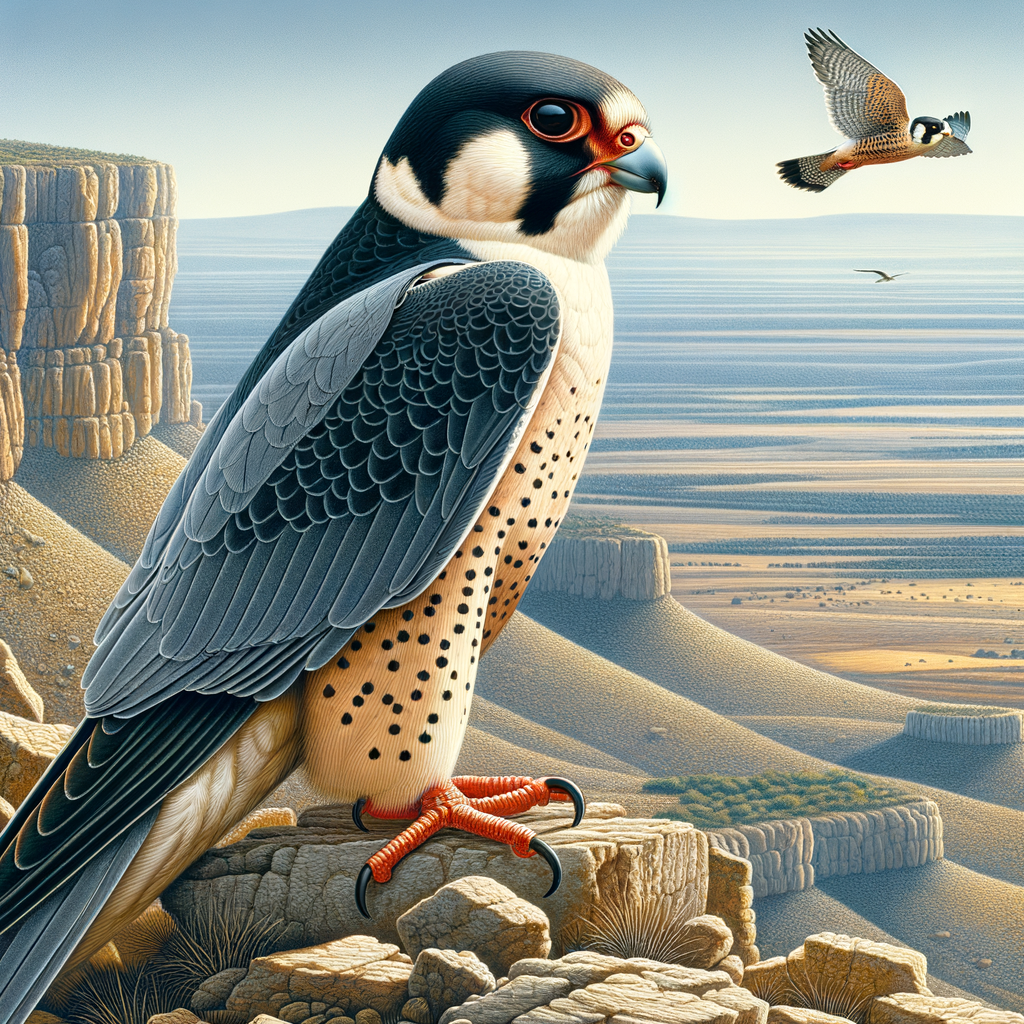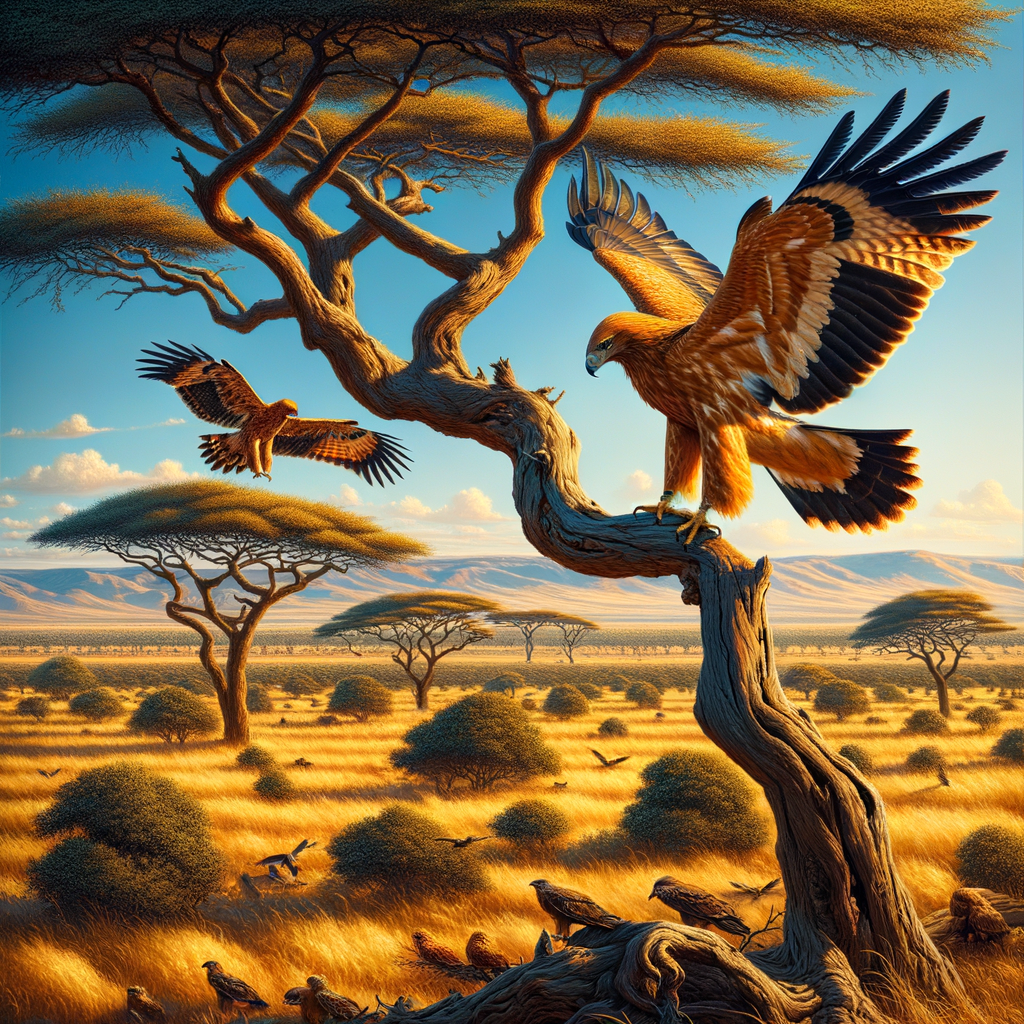Discover the Wonders of Red-Footed Falcons
- Appearance: Small, slender falcons with striking red feet and contrasting plumage, featuring dark gray, rust, and black colors.
- Diet: Predominantly insectivorous, dining primarily on large insects like beetles and grasshoppers.
- Hunting Techniques: Employs a hover-hunting method, skillfully swooping down to catch prey mid-air.
- Migration: Known for their impressive long-distance migrations between Europe and Africa, covering vast distances.
- Behavior: Sociable birds, often seen in large groups, especially during migration seasons.
- Breeding: Prefers open woodlands and savannas for nesting, utilizing old nests from other bird species.
- Conservation Status: Currently listed as Least Concern, but their habitat is threatened by agricultural practices and pesticide use.
Learn more about the fascinating red-footed falcon and how they continue to captivate bird enthusiasts around the world!
Discovering the Majestic Red-Footed Falcons: A Journey Worth Taking
Red-footed falcons are unique and captivating creatures, with their striking appearance and fascinating behavior. They’re small but mighty, with beautiful slate-gray feathers and reddish-orange legs that make them truly stand out in the avian world. These birds have a lot of intriguing secrets that are just waiting for you to uncover, and we’re here to guide you through their magical journey.
So, why is it important to keep reading about red-footed falcons? Just like unraveling the mysteries of an ancient Irish legend, discovering the life of these falcons can enrich your knowledge and appreciation of nature. You’ll learn about their habitats, hunting techniques, migration patterns, and the challenges they face in the wild. By the end of this article, you’ll feel a deep connection to these extraordinary birds, and who knows? You might even be inspired to embark on your own falconry adventure.
Let’s dive into the world of red-footed falcons and uncover the marvels they hold.
Discovering the Red-Footed Falcon
At Learn Falconry, we are passionate about all species of falcons. One of the most unique and interesting is the red-footed falcon. This red-footed species is stunning and employed in red-footed falconry. Let’s embark on a journey to learn about these wonderful birds.
The red-footed falcon (Falco vespertinus) is a fascinating bird of prey found primarily in eastern Europe and Asia. These small-to-medium-sized raptors are easily identified by their striking appearance. Males have slate-gray plumage contrasted by bright red legs and feet, while females and juveniles exhibit a more colorful mix of tan and brown with blue accents.
The red-footed species thrives in open grasslands, steppes, and agricultural areas where they can hunt insects, small mammals, and birds from perches or during flight. Their aerial acrobatics are a sight to behold, displaying impressive precision and agility as they capture their prey.
Red-Footed Falconry: A Special Art Form
Falconers who engage in red-footed falconry appreciate these birds not only for their hunting capabilities but also for their manageable size and docile nature. If you’re considering training a red-footed falcon, it’s essential to familiarize yourself with training techniques tailored to different falcon species.
First things first, you need the right falconry equipment. A proper hood, jesses, leashes, and perches are crucial for handling and housing your falcon safely. For more detailed information on what’s necessary, check out our guide on essential falconry kits.
Training a red-footed falcon involves several steps, starting with basic obedience and progression to advanced hunting techniques. As with all birds of prey, positive reinforcement and patience go a long way. Learn more about various training methods we recommend.
Red-Footed Falcons in Cultural and Historical Contexts
Red-footed falcons have a place in history and culture, playing roles in many ancient and modern societies. To grasp the broader context of falconry and its significance, explore our history of falconry section. You’ll discover how falconers throughout the ages have revered these birds for their unique skills and beauty.
For those who wish to dive deeper into specific historical periods – from the ancient origins of falconry to the medieval European practices – our extensive resources provide fascinating insights.
Legal Aspects and Ethical Practices of Falconry
Engaging in falconry involves understanding and complying with various laws and regulations to ensure the ethical treatment of these magnificent birds. Our comprehensive guides on the legal aspects of falconry cover everything from licensing requirements to international regulations.
It’s not just about following the law, though. Ethical practices in falconry are paramount to maintaining the well-being of the birds and the sport’s reputation. Explore more about the ethics in falconry to ensure your practices support conservation efforts and animal welfare.
Health and Nutrition for Red-Footed Falcons
Keeping a red-footed falcon healthy involves a balanced diet and regular health check-ups. Proper nutrition ensures they perform at their best during training and hunts. Learn more about basic falcon nutrition and common health issues to watch out for.
Regular health maintenance is crucial. Take a look at our articles on preventative health care for falcons and handling stress to keep your red-footed falcon in top condition.
Resources and Further Reading
To truly master the art of falconry with a red-footed falcon, continuous learning is essential. At Learn Falconry, we provide a plethora of resources, including classic and modern falconry books. These readings will arm you with the knowledge and insights needed to successfully care for and train your red-footed falcon.
By exploring different falconry techniques, you will hone your skills and keep your falcon engaged and healthy. Don’t forget to check out our detailed guides tailored to beginners to advanced falconers to improve your practice.
For those interested in the broader implications and conservation efforts related to falconry, our articles on ethical practices and conservation will provide valuable insights into how you can contribute to sustaining these majestic creatures and their habitats.
Remember, falconry is not just a hobby; it’s a commitment to preserving a longstanding cultural tradition and ensuring the wellbeing of the birds we admire. With the right techniques, equipment, and knowledge, falconry can be an incredibly rewarding pursuit.
About the Red-footed Falcon
Physical Characteristics
The Red-footed Falcon (_Falco vespertinus_) is a fascinating bird with distinct physical features.
| Trait | Measurement (Males) | Measurement (Females) |
|---|---|---|
| Length | 27-32 cm | 28-33 cm |
| Wingspan | Long-winged | Long-winged |
These dimensions highlight the slight size difference between male and female Red-footed Falcons. Their long wings help them excel in flight, setting them apart from similar species.
Habitat and Nesting Preferences
The Red-footed Falcon prefers habitats with specific types of trees for nesting and roosting. These include:
- Populus nigra (Black Poplar)
- Quercus robur (English Oak)
Additionally, they are often found in areas with extensive Medicago sativa (Alfalfa) cultivation, which provides ideal conditions for foraging.
Hunting Behavior
A significant part of each day for a Red-footed Falcon is dedicated to hunting.
| Behavior | Activity Peaks |
|---|---|
| Hovering and Perching Activity | Just after sunrise, before sunset |
This pattern allows them to take advantage of optimal light and weather conditions.
Conservation Status
The Red-footed Falcon is listed as Vulnerable on the IUCN Red List due to factors like:
- Habitat Loss
- Habitat Degradation
Efforts are being made to help conserve this species. These include the installation of artificial nest boxes to make up for the lack of natural nesting sites.
Population Overview
The global population size of the Red-footed Falcon has experienced a significant decline.
| Estimated Population Size |
|---|
| Between 287,500 and 1,500,000 individuals |
Detailed Facts and Figures
A close look at the population and conservation indicators for Red-footed Falcons.
| Indicator | Status |
|---|---|
| IUCN Red List Classification | Vulnerable |
| Global Population Trend | Rapid decline |
| Breeding Pairs (Past 60 years) | Unknown but decreasing |
Conclusion
This thorough exploration into the Red-footed Falcon’s current status underscores the challenges they face and the importance of ongoing conservation efforts. As we learn more about these incredible birds, our commitment to preserving their habitats becomes ever more critical.
The Fascinating World of the Red-footed Falcon
The Red-footed Falcon is a captivating bird with unique characteristics that set it apart in the world of falconry. With a wingspan that helps it soar and hover remarkably, this species exhibits distinct behaviors, including hunting patterns that peak just after sunrise and before sunset. These birds are typically seen nesting in specific trees like Populus nigra and Quercus robur, which are crucial for their survival.
Despite being classified as Vulnerable due to habitat loss and degradation, there are ongoing conservation efforts to support their population. Artificial nest boxes and optimized agricultural activities within protected belts are some of the strategies being employed to ensure their future.
The Red-footed Falcon’s plight serves as a reminder of the delicate balance between nature and human activity. By learning more about these graceful creatures and supporting conservation efforts, we can help preserve their presence in our skies for generations to come. So, whether you’re a seasoned falconer or new to the world of birds of prey, the story of the Red-footed Falcon is a testament to the beauty and resilience of wildlife.
Through understanding and action, we can contribute to a brighter future for this remarkable species. Let’s continue to marvel at their elegance and work towards providing them with the habitats they need to thrive.



